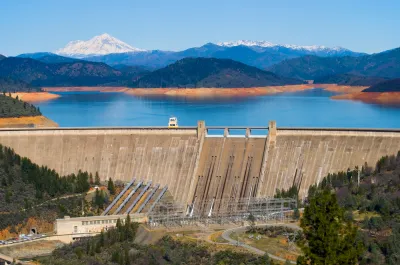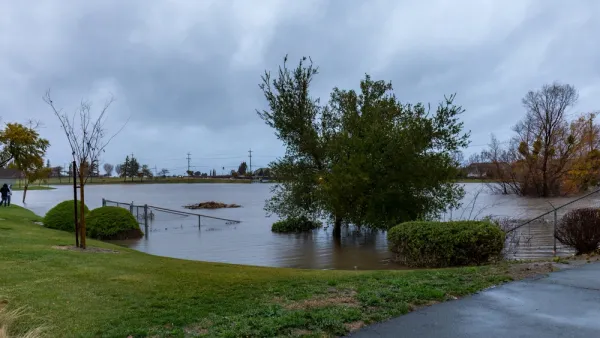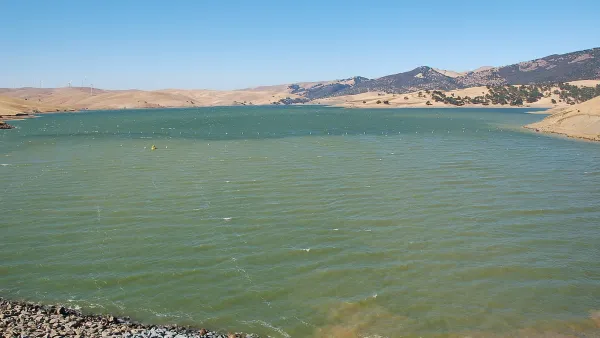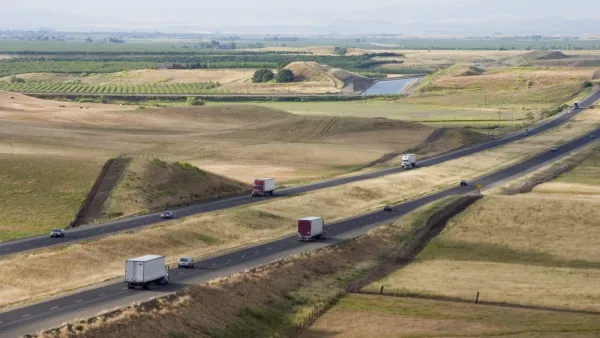The state is slowly starting to curb water consumption, but progress has been ‘disappointingly slow’ as water supplies across the West diminish to historic lows.

Californians are saving more water, but it’s still not enough to meet Governor Newsom’s goal of reducing water use by 15 percent, reports Hayley Smith in the Los Angeles Times. “After months of middling efforts — including a 17.6% increase in urban water use in April — residents in May saved 3.1% more water than in the same month in 2020, the baseline year against which current data are measured, according to new figures from the State Water Resources Control Board.”
Since April, “The latest figures indicate the message is seeping in, albeit only slightly, with the South Coast hydrologic region that is home to Los Angeles eking out a 2.2% savings in May.” According to Peter Gleick, co-founder and senior fellow of the Pacific Institute, “It’s progress in the right direction, but it’s still disappointingly slow.” The article indicates that Californians only cut water use by 2 percent since last July.
“On June 10, the water board required all urban water suppliers to implement Level 2 of their emergency drought restrictions. It also took the step of banning the irrigation of “nonfunctional grass,” or grass that is purely decorative, at businesses and in common areas of subdivisions and property controlled by homeowner associations.” The decision comes as the state’s largest reservoir, Lake Shasta, sits at 39 percent of capacity, “about half its average for this time of year.”
Smith writes that “The [2022-2023 state budget] allocates $2.8 billion for drought response and water resilience, officials said, including $175 million for water-saving strategies such as turf replacement.” According to a separate article in WaterWorld, the California Department of Water Resources (DWR) just awarded $2 million to four water conservation projects aimed at improving drought resilience.
FULL STORY: California is finally reducing water use, but it’s not enough amid severe drought

Analysis: Cybertruck Fatality Rate Far Exceeds That of Ford Pinto
The Tesla Cybertruck was recalled seven times last year.

National Parks Layoffs Will Cause Communities to Lose Billions
Thousands of essential park workers were laid off this week, just before the busy spring break season.

Retro-silient?: America’s First “Eco-burb,” The Woodlands Turns 50
A master-planned community north of Houston offers lessons on green infrastructure and resilient design, but falls short of its founder’s lofty affordability and walkability goals.

Test News Post 1
This is a summary

Analysis: Cybertruck Fatality Rate Far Exceeds That of Ford Pinto
The Tesla Cybertruck was recalled seven times last year.

Test News Headline 46
Test for the image on the front page.
Urban Design for Planners 1: Software Tools
This six-course series explores essential urban design concepts using open source software and equips planners with the tools they need to participate fully in the urban design process.
Planning for Universal Design
Learn the tools for implementing Universal Design in planning regulations.
EMC Planning Group, Inc.
Planetizen
Planetizen
Mpact (formerly Rail~Volution)
Great Falls Development Authority, Inc.
HUDs Office of Policy Development and Research
NYU Wagner Graduate School of Public Service




























